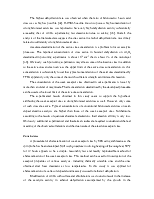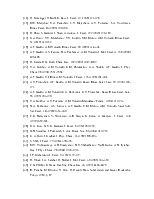















Ruslan A. Zotov, Vladimir V. Molchanov, … Alexander M. Volodin and Alexander F. Bedilo
Boreskov Institute of Catalysis, Novosibirsk 630090, Russia
A series of pure and doped alumina samples were characterized by EPR using spin probes and tested in ethanol dehydration. It was found that the concentrations of the electron acceptor sites and the catalytic activity increased when alumina was modified with chlorides and sulfates, whereas that of the electron donor sites decreased. A very good correlation between the concentration of the weak donor sites and the catalytic activity of the acid-modified catalysts almost passing through the origin of coordinates was obtained for all the studied samples. Alumina poisoning with sodium resulted in the decrease of the catalytic activity and the concentration of the weak acceptor sites. Therefore, it appears that the weak acceptor sites tested using anthracene are related to the sites active in the ethanol dehydration reaction.
Keywords: alumina, acceptor sites, ethanol dehydration, EPR
Light olefins (ethylene, propylene and butylene) are important intermediates in petroleum industry. Among other olefins, ethylene is most widely produced by the chemical industry [1]. It is the key precursor for the synthesis of ethylene oxide, polyethylene and styrene.
Today practically all ethylene is produced by steam cracking of oil and liquefied petroleum gas (propane-butane fraction) [2]. Due to the limited natural oil resources, their irregular distribution in the world, and high prices to crude oil, dehydration of lower alcohols, in particular bioethanol and biobutanol, to the corresponding olefins tends to become a competitive and promising approach that attracts significant attention of the researchers.
Many solid materials are known to catalyze alcohol dehydration [3-8]. In many papers it was shown that dehydration of alcohols over solid catalysts takes place predominantly on the acid sites and the presence of strong acid sites on alumina catalysts increases the alcohol conversion [9]. However, for some systems it was reported that the concentration of the acid sites is a more important factor accounting for the overall hydration rate than their strength because this reaction is not particularly sensitive to the strength of the acid sites [10, 11].
There are a number of different methods used for determining the nature, strength and concentration of the surface acid sites during investigation of dehydration reactions over different acid catalysts. The total acidity can be estimated by potentiometric titration with n-butyl amine [12]. The temperature-programmed desorption (TPD) of ammonia makes it possible to compare the strength and concentration of the acids sites on the catalysts with substantial differences in the acidity [13]. UV-vis spectroscopy using irreversible adsorption of organic bases with different acid strength pKa, such as pyridine (pKa = 5.3) and piperidine (pKa = 11.1) allows one to determine the relative concentrations of the acid sites of different strength [14]. FTIR spectroscopy of adsorbed bases is probably the most widely used method for determination of the surface acidity. The adsorption of such bases as ammonia, pyridine and CO makes it possible to distinguish Lewis and Bronsted acid sites, determine their strength and concentration [12, 15, 16].
However, these methods characterize all acid sites, many of which may be absolutely inactive. An alternative method for characterization of the active sites on the surface of acid or base catalysts is EPR using spin probes formed on the surface after adsorption of initially diamagnetic molecules [17-19]. This method is selective only to the active sites initiating the transformation of the adsorbed donor or acceptor molecules to the corresponding radical anions or radical cations.
Oxide catalysts with relatively strong acidity are known to possess surface electron acceptor sites capable of oxidizing adsorbed donor molecules by Single Electron Transfer (SET) mechanism [20]. This process results in the formation of the radical cations of the adsorbed aromatic molecules. In many cases these radical cations are readily detected by EPR and act as spin probes that are formed on the active acceptor sites. Their concentration characterizes the concentration of the acceptor sites [18]. Meanwhile, the relative strength of the sites can be evaluated using donor molecules with different ionization potentials. This method is characterized by easy sample pretreatment by calcination in air, the possibility of studying many samples in one adsorption experiment, short registration time, and reasonably high precision.
In the current paper we report on the development of a simple technique for characterization of the weak acceptor sites on alumina-based catalysts using anthracene as the spin probe and demonstrate the existence of a good correlation between the concentration of the acceptor sites measured by this method and the ethylene formation rate in the ethanol dehydration.
Уважаемый посетитель!
Чтобы распечатать файл, скачайте его (в формате Word).
Ссылка на скачивание - внизу страницы.